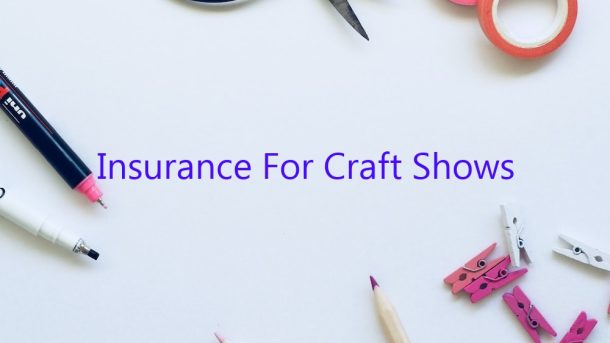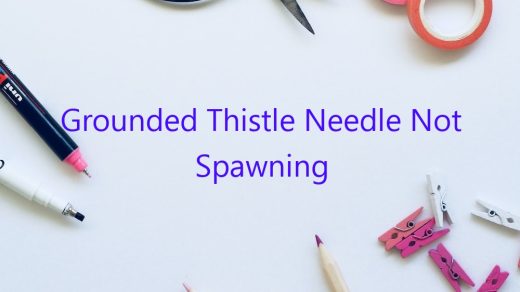If you are a crafter, you know that selling your wares at craft shows is a great way to get your products in front of a large number of potential buyers. But before you can start selling your crafts, you need to make sure that you are properly insured.
Craft show insurance is a specialized type of insurance that is designed to protect sellers who participate in craft shows. It can provide coverage for your booth, your products, and your liability in the event that someone is injured at your booth.
There are a number of different insurance companies that offer craft show insurance, so it is important to shop around to find the best policy for your needs. Be sure to read the policy carefully to make sure that you are aware of what is and is not covered.
In addition to insurance, be sure to also read the rules and regulations for the craft shows that you plan to attend. Some craft shows require that you have liability insurance, and others may have other requirements.
If you are a crafter, selling your products at craft shows is a great way to get your products in front of a large number of potential buyers. To protect yourself, be sure to get insurance for craft shows.
Contents
What type of insurance do crafters need?
When it comes to crafting, there are a lot of different types of insurance policies that crafters need in order to be protected. Here are some of the most important types of insurance that crafters should have:
General liability insurance: This type of insurance protects crafters from any legal claims that may be made against them. For example, if someone gets injured while at your studio, general liability insurance will help to cover the costs associated with any legal action that may be taken.
Product liability insurance: This type of insurance protects crafters from any legal claims that may be made against them as a result of a defective product. For example, if you sell a piece of jewelry that breaks and causes injury, product liability insurance will help to cover the costs associated with any legal action that may be taken.
Business insurance: This type of insurance protects crafters from any financial losses that may occur as a result of running their business. For example, if your business is damaged in a fire, business insurance will help to cover the costs of repairing or rebuilding your business.
Artists’ liability insurance: This type of insurance is specifically designed for crafters and other artists. It protects artists from any legal claims that may be made against them as a result of their work. For example, if you sell a painting that is later found to be a forgery, artists’ liability insurance will help to cover the costs associated with any legal action that may be taken.
As you can see, there are a lot of different types of insurance that crafters need in order to be protected. Make sure to research the different types of insurance available and find one that is right for you.
What kind of insurance should an artist have?
Most people think of insurance as a way to protect their finances in case of an emergency, and this is certainly one use of insurance. However, insurance can also be a way to protect your assets and your livelihood. If you are an artist, you should consider the different types of insurance that are available to you and make sure that you are properly protected.
The first type of insurance that you should consider is liability insurance. This type of insurance can protect you if someone is injured or if property is damaged as a result of your work. For example, if you are a sculptor and someone trips on your sculpture and is injured, your liability insurance would protect you from being sued.
The second type of insurance that you should consider is property insurance. This type of insurance can protect your equipment and your supplies in the event of a fire, theft, or other type of damage.
The third type of insurance that you should consider is health insurance. If you are an artist, you are likely to be doing a lot of physical work, which can put you at risk for injuries. Health insurance can help you pay for medical expenses if you are injured.
The fourth type of insurance that you should consider is disability insurance. If you are unable to work due to an illness or an injury, disability insurance can help you pay your bills.
The fifth type of insurance that you should consider is life insurance. If something happens to you, life insurance can help your loved ones pay for funeral expenses and other costs.
It is important to note that you do not need to have all of these types of insurance. However, it is important to have at least some type of insurance to protect yourself and your livelihood. Talk to an insurance agent to find out which type of insurance is right for you.
What is a product liability insurance?
A product liability insurance policy is insurance that helps protect a business from lawsuits that may arise from the use of their products. This type of policy can help protect the business from financial damages that may come as a result of a product liability lawsuit.
There are a few key things to know about product liability insurance policies. First, they can help protect a business from financial damages that may come as a result of a product liability lawsuit. Second, product liability insurance policies typically cover three types of claims: design defects, manufacturing defects, and marketing defects. Finally, product liability insurance policies can help protect a business from both lawsuits filed by consumers and lawsuits filed by other businesses.
If you’re thinking about purchasing a product liability insurance policy for your business, it’s important to shop around and compare quotes from different insurers. It’s also important to make sure that the policy you choose covers the types of claims that you’re most likely to face.
Do freelance artists need insurance?
Do freelance artists need insurance?
This is a question that many freelance artists ask themselves. The answer is not always clear-cut. There are a few things to consider when making this decision.
The first thing to think about is what kind of work you do. If you are working with clients, then you may need liability insurance. This will protect you if a client gets injured or if you damage their property.
Another thing to consider is whether you are using your own equipment. If you are, then you may need insurance to cover any damage or loss.
It is also important to have insurance if you are traveling to meet clients. This will protect you if something happens while you are away from home.
Overall, the decision of whether to get insurance depends on your individual situation. Talk to an insurance agent to find out what policies are available to you and what would be the best fit for your needs.
Do I need insurance to sell handmade goods?
If you’re a crafter, you may be wondering if you need insurance to sell your handmade goods. The answer is, it depends.
Crafters who sell their products online may not need insurance, as long as they’re not selling products in large quantities. If you’re selling a limited number of items, or if you only sell to friends and family, you likely don’t need insurance.
However, if you’re selling your products at craft shows, or if you’re selling to businesses, you may need insurance. Crafters who sell their products through a third party, such as Etsy, may also need insurance.
There are a few different types of insurance that crafters may need. The most common type of insurance is liability insurance. This insurance protects you if someone gets injured while using your product.
You may also need product liability insurance. This insurance protects you if someone gets sick or dies after using your product.
If you’re shipping your products, you may need shipping insurance. This insurance protects your products if they get damaged or lost during transit.
It’s important to talk to an insurance agent to determine which type of insurance is best for you. Crafters should also review their homeowner’s insurance policy to see if it covers any of their handmade products.
Do you need insurance to sell resin products?
If you manufacture and sell resin products, you may be wondering if you need insurance. The answer is, it depends.
In general, insurance is a good idea for any business. Product liability insurance can help protect you in the event that someone is injured by one of your products. If you are not already insured, it is a good idea to speak to an insurance agent to find out what policies would be a good fit for your business.
There are a few things to keep in mind when choosing an insurance policy. First, make sure you are covered for both personal and product liability. Your policy should also include coverage for property damage, in case of accidents or fires. You may also want to consider business interruption insurance, which can help you if your business is shut down due to a covered event.
Insurance is an important part of any business, and it is especially important when selling resin products. Make sure you are fully protected with the right insurance policy.
How much does Artist insurance cost?
How much does Artist insurance cost?
This is a difficult question to answer because the cost of artist insurance depends on a variety of factors, including the artist’s nationality, the type of work they perform, and the level of insurance coverage they require. However, artist insurance typically costs between £100 and £1,000 per year, depending on the coverages needed.
There are two main types of artist insurance: public liability insurance and professional indemnity insurance. Public liability insurance protects the artist against any injury or damage that they may cause to a third party, while professional indemnity insurance protects the artist against any legal action that may be taken against them for professional negligence.
Most artists require some level of both public liability and professional indemnity insurance. The level of cover required will depend on the type of work the artist performs and the risks associated with that work. For example, an artist who performs live shows will need a higher level of public liability insurance than an artist who produces paintings.
It is important to note that artist insurance is not mandatory in the United Kingdom, but it is highly recommended. The cost of artist insurance is a small price to pay for the peace of mind it provides.




